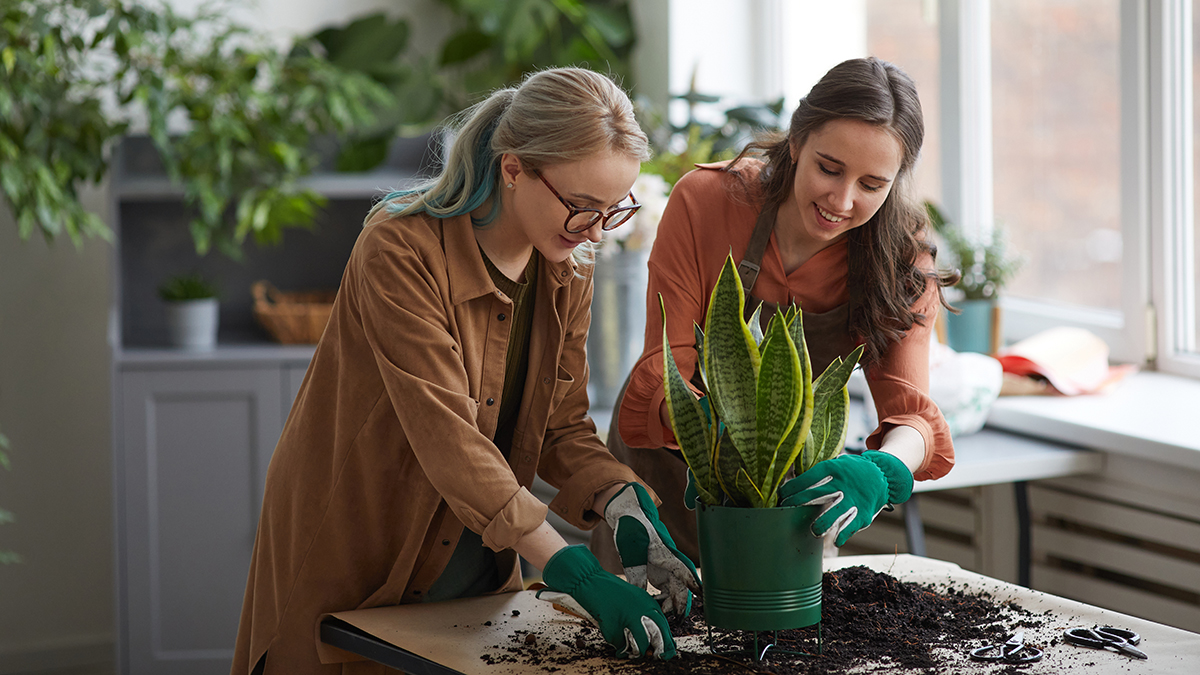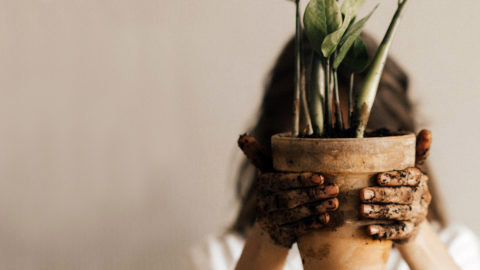How to Repot a Plant
Like babies outgrowing their cribs, plants eventually need larger accommodations. Here's everything you need to know to repot a plant.
Apr 10, 2022
Like babies outgrowing their cribs, plants eventually need larger accommodations. Repotting plants is essential; otherwise, their smaller space could cause the plant's health to deteriorate. Re-planting provides more room for the root system to expand so the plant can continue to grow and remain healthy.
How do you know when it is time to repot a plant?
When a plant appears to be too large for its container, it's time to repot it. This occurs when the plant is pushing against the wall of the pot. The center of the plant will appear very dense, with little room to breathe and grow. In some cases, depending on the plant, the roots can begin to grow upward around the plant or through the bottom of the plant, which is what is known as root bound.

How to repot your plant in a new container
First, remove the plant from the old container. Scratch and massage the sides and bottom roots. Loosen them a bit. A kitchen fork is helpful in this task. Add some soil to the bottom of the grower's pot. Center the plant and position it so there is about a half inch below the edge of the pot when filling with soil.
Water your plant more than once a week. As the plant adjusts and roots begin to grow, the plant will need more water. Keep the plant away from full sunlight, as it will be at a tender stage of acclimating to the new pot. Don't fertilize for about a month. Now your plant is ready to GROW!
A note for homeowners with a well and water softener: Do not use water from your tap that has gone through a water softener, as this contains salts that are harmful for plants. Use water that bypasses the softener, rainwater, or bottled spring water.
How to keep your plant clean and hydrated

Plants love to take a shower! For smaller plants, your kitchen sink is the perfect place to shower off the leaves and hydrate plants that have been dried out over time. Shower your plant and let the water settle for a few minutes, and then hold the soil portion with your hands and turn your plant over to release any excess water. Dry the leaves with a damp cloth to clean off any residue, and clean your pot exterior. This process not only hydrates your plant but also rinses the soil and refreshes and cleans the leaves.
Remember to dust off your plant leaves in between showers.
Safe placement of your plant
When placing your plant on a surface or the floor, be mindful that condensation between the pot and floor can create staining or even damage the surface permanently. It is best to protect all surfaces by using a plant caddy or cork mat to separate the plant pot base from the floor or tabletop surface. Check the type of light —indirect or direct — that your plant requires. Remember to keep your plants away from air conditioning and heating vents.








